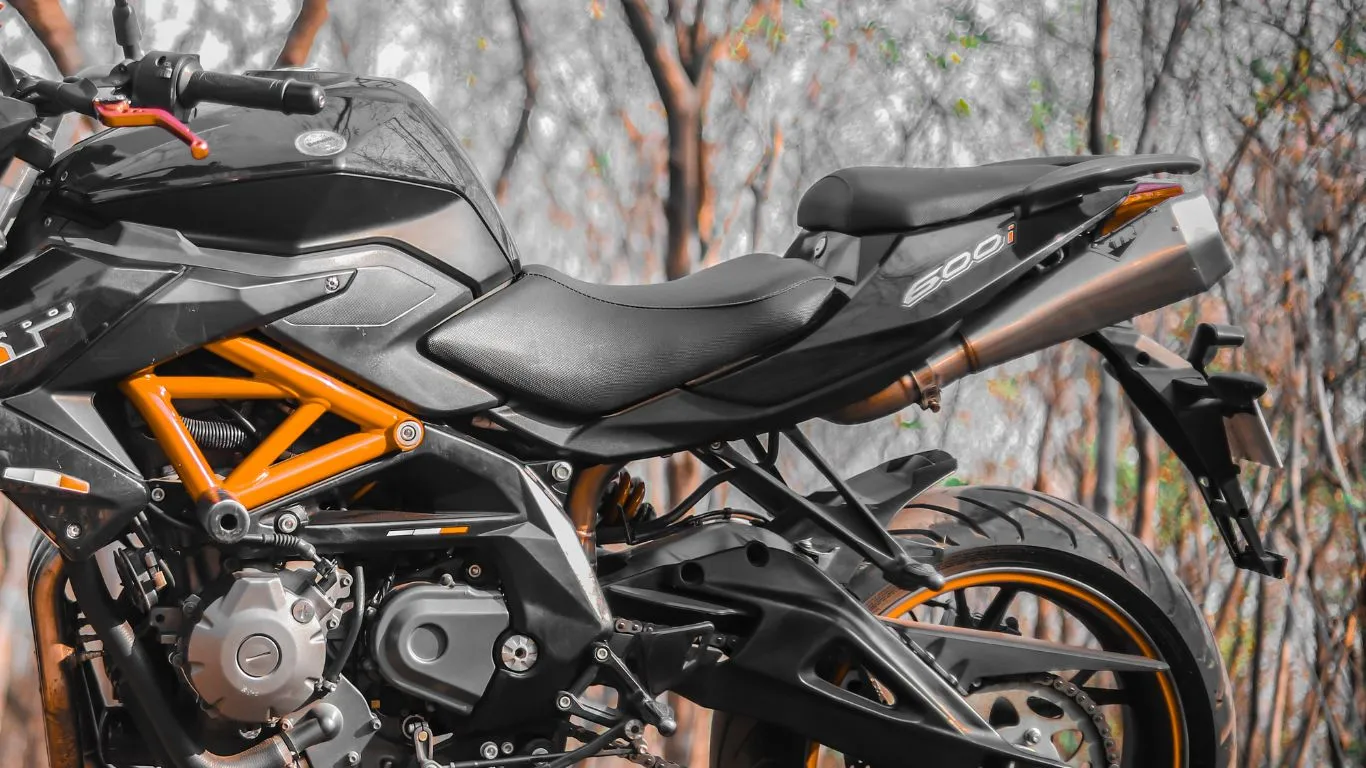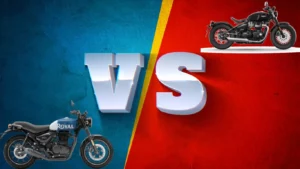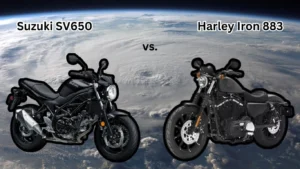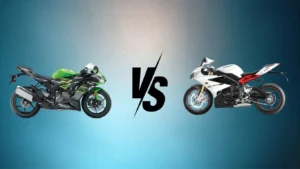Before diving into the techniques of making a motorcycle seat more comfortable, it’s crucial to understand its anatomy. Just like a well-cooked meal, the comfort of a motorcycle seat depends on the perfect blend of several ingredients. Think of the seat as a multi-layered sandwich, with each layer serving its unique purpose.
The Cover
The outermost layer, which we call the cover, is the part that you come into direct contact with when you sit. Vinyl, leather, or synthetic materials make this layer, each with pros and cons. Vinyl is generally more resistant to weather and easier to clean, while leather gives a classic look and feels softer to the touch. Synthetic materials, on the other hand, offer a good balance between durability and comfort.
The Foam
Right beneath the cover is the foam. This layer is the heart of a motorcycle seat, dictating its comfort and support. It’s like your bed’s mattress—too hard and you’re uncomfortable, too soft and you’re unsupported. High-density foam is usually the preferred choice because it provides an optimal balance of comfort and support.
The Base
Then we have the base. This layer is the skeleton of a motorcycle seat, providing its shape and structure. It’s the unsung hero of the seat, taking on the weight without getting much of the spotlight. The base is usually made of plastic, metal, or fiberglass, each offering different levels of durability and flexibility.
Note: Remember, a seat that feels extremely comfortable in the beginning might not stay the same after an hour-long ride. The perfect motorcycle seat is the one that maintains its comfort over long periods.
Adjusting Each Layer for Comfort
Now that we have dissected the motorcycle seat, it’s time to put on our surgeon gloves and make the necessary adjustments. Here, we will explore several techniques to modify each layer of the seat, making it more comfortable for any ride.
Assessing Your Riding Needs
Before embarking on the journey to make your motorcycle seat more comfortable, it’s crucial to first understand your riding needs. Not every rider has the same preferences, and what’s comfortable for one person might not be for another. Therefore, assessing your riding needs is an integral first step.
Consider Your Riding Style
Your riding style is a significant factor in determining what kind of seat will provide the most comfort. There are three primary riding styles:
- Touring: If you are a touring rider who spends long hours on the saddle, you need a seat that provides maximum comfort and support.
- Sport: Sport riders, who lean forward and put more weight on the handlebars, may prefer a narrower seat that allows for easier shifting of body weight during high-speed maneuvers.
- Cruising: Cruiser riders sit upright or lean back slightly, and may benefit from a seat with a backrest for additional support.
Factor in Your Body Type
Your body type can also determine the most comfortable seat. Consider your height, weight, and inseam. Shorter riders may prefer a lower seat height, while taller riders may prefer a higher one.
Think About Your Typical Riding Distance
The distance you typically cover in a single ride is another important consideration. If you usually go for short rides around town, a basic seat might suffice. However, if you often embark on long-distance rides, a seat designed for endurance is worth considering.
Don’t just pick the most expensive seat. Find the seat that suits your riding style and body type.
Choosing the Right Type of Material
Material is a major factor in motorcycle seat comfort. The seat material absorbs shocks and supports the rider, making it more comfortable. Material pros and cons vary. Let’s examine some common ones:
Leather
Leather motorcycle seats are a classic choice. Renowned for their durable and premium feel, leather seats are often associated with high-end motorcycles. They are highly resistant to wear and tear, giving them a long lifespan. However, they require careful maintenance to keep the material supple and prevent it from cracking.
Vinyl
Vinyl seats are a popular alternative to leather. They are resistant to weather, easy to clean, and generally cheaper than leather. However, they may not provide the same level of comfort as leather and can become slippery when wet.
Gel
A relatively new addition to the world of motorcycle seats, gel seats integrate a layer of gel on top of the standard foam padding. This enhances comfort by relieving pressure points and distributing weight evenly across the seat. However, gel seats are usually more expensive than their leather or vinyl counterparts.
Motorcycle seat comfort depends on more than just the material. Seat design and foam type also matter.
Comparing Materials for Motorcycle Seats
Choosing the right material for your motorcycle seat is like choosing the right partner for a dance – each has its own rhythm, style, and comfort level. Some materials evoke the classic feel of a vintage bike, while others speak to the modern rider’s need for durability and ease of maintenance. There are three primary types of materials used for motorcycle seats: leather, vinyl, and synthetic materials.
Leather
Motorcycle seats are traditionally leather. Its elegance, comfort, and unique patina tell the story of many rides. It needs more upkeep than other materials.
- Pros: Comfortable, breathable, develops a unique patina over time
- Cons: Requires regular maintenance, can get hot in the sun, not as durable as synthetic materials
Vinyl
Like a reliable friend, vinyl is a common choice for motorcycle seats due to its durability and easy maintenance. It may lack the charm of leather, but it certainly scores high in practicality.
- Pros: Durable, easy to clean, weatherproof
- Cons: Less comfortable than leather, does not breathe as well
Synthetic Materials
The newcomers to the scene, synthetic materials such as Alcantara or Corbin, are gaining popularity. They combine the comfort of leather with the durability of vinyl, providing a balanced option for riders.
- Pros: Combines comfort and durability, weather-resistant, easy to maintain
- Cons: Can be pricey, may not have the classic appeal of leather
Your riding style, comfort preferences, and maintenance habits should determine your seat material. Vinyl and synthetic materials are durable and easy to maintain, but leather is classic. It’s a dance of trade-offs, and the right partner makes it fun.
Here is a comparative table for quick reference:
| Material | Pros | Cons |
|---|---|---|
| Leather | Comfortable, breathable, develops a unique patina | Requires maintenance, can get hot, less durable |
| Vinyl | Durable, easy to clean, weather-resistant | Less comfortable, not breathable |
| Synthetic | Comfortable, durable, weather-resistant, easy to maintain | Can be pricey, lacks classic appeal |
Importance of Proper Seat Height
Ensuring the right seat height on a motorcycle is not just about comfort, it is also a matter of safety and control. Navigating through the bustling streets or cruising down the highway, the motorcycle seat height can have a critical impact on your riding experience.
“When the seat height of your motorcycle is tailored to your body, it enables better control, enhances comfort, and ultimately improves your ride.”
How Seat Height Impacts Riding Performance
- Balance and Control: A seat height that is too high can make it difficult to keep the motorcycle balanced, especially at low speeds or when stopping. However, a low seat changes the bike’s centre of gravity, making it harder to control.
- Comfort: A seat that is too high or too low can be uncomfortable, causing strain on the rider’s back, arms, and legs. This discomfort can distract the rider, potentially leading to unsafe riding conditions.
- Confidence: When you can comfortably reach the ground with both feet, it boosts your confidence as a rider. Confidence improves riding and road experience.
Tips for Adjusting Seat Height
Here are a few tips that can make the process of adjusting your motorcycle seat height more comfortable and effective:
- Try Different Positions: Try different motorcycle seats to find the most comfortable and controllable. Trial-and-error can help you find the right seat height.
- Use Adjustable Tools: Use tools that allow you to adjust the seat height easily. These can range from adjustable seats to suspension lowering kits.
- Consider Professional Help: If you are not comfortable making these adjustments yourself, consider seeking help from a professional. They can advise you and ensure proper adjustments.
Seat Height Comparison
To provide a more concrete understanding, here’s a comparison of seat heights for a few popular motorcycle models:
| Motorcycle Model | Seat Height |
|---|---|
| Honda CBR 500R | 30.9 inches |
| Kawasaki Ninja ZX-6R | 32.7 inches |
| Yamaha YZF-R1 | 33.7 inches |
Remember, the right seat height is subjective and varies for every individual. What matters the most is your comfort and control over the motorcycle.
Optimizing Seat Width and Length
When it comes to motorcycle seat comfort, the width and length of the seat play pivotal roles. Riding on a seat that’s too narrow or too short can lead to discomfort, while a seat that’s too wide or too long can make controlling the bike more difficult. Thus, balance is essential.
Finding the Right Seat Width
Rider size and bike type determine motorcycle seat width. The seat should be wide enough to support the rider’s buttocks without constriction or overextension. This keeps riders comfortable and secure on bikes.
Remember, a good seat doesn’t just ‘fit’ — it should also enhance your overall riding experience.
Choosing the Appropriate Seat Length
Also consider seat length. Longer seats may allow more movement, especially on longer rides. The length must not hinder the rider’s ability to reach the ground or control the bike. Thus, seat length depends on rider height, inseam length, and bike model.
Just like with seat width, the best seat length is one that strikes a balance between comfort and control.
- Seat Width: Ideally, should comfortably support the rider’s buttocks.
- Seat Length: Should provide room to move but not interfere with bike control.
Adjustments to seat width and length can often be made aftermarket, with a variety of products available to help shape your seat to your specific needs. This can include adding or removing padding, or even replacing the seat entirely. In some cases, professional fitting may be recommended to ensure optimal comfort and safety.
Adding Extra Padding and Cushioning
Adding padding and cushioning to your motorcycle seat is one of the easiest ways to make it more comfortable. This approach improves comfort and reduces backside stress on long rides. It’s like going from a bench to a sofa.
Materials for Extra Padding
There are a variety of materials you can use to add extra padding to your motorcycle seat. The most commonly used are:
- Foam: Foam is popular due to its affordability and ease of installation. Memory foam and high-density foam are good cushioning options.
- Gel Pads: Gel pads are a more sophisticated alternative to foam. They shape to your body for comfort and support.Their durability and comfort make them worth the cost.
- Air Cushions: Air cushions are inflatable pads that can be adjusted to suit your preference. They support weight evenly and reduce pressure points.
Installation Process
Once you’ve chosen your padding material, the next step is the installation. Step-by-step instructions:
- Unscrew and remove the seat from your motorcycle.
- Cut the padding material to match the size and shape of your seat.
- Install seat padding. Foam, gel, and air cushion straps can be adhered.
- Reinstall the seat onto your motorcycle.
Note: While the aforementioned process is generally straightforward, it’s always advisable to refer to the installation instructions provided by the manufacturer of your padding material.
Motorcycle seat padding improves comfort, ride quality and fatigue on long rides. Selecting and installing the right material can improve your ride.
Exploring Gel Seat Pads
Gel seat pads improve motorcycle seat comfort. These are useful for frequent long-distance travellers. Standard motorcycle seats are stiff, so riding can cause discomfort and fatigue. The gel seat pad is our hero, ready to make your ride more enjoyable.
What are Gel Seat Pads?
Just as the name suggests, gel seat pads are a type of motorcycle seat accessory that are filled with gel. The primary purpose of this gel is to provide a more cushioned and comfortable riding surface than the standard motorcycle seat. The gel within the pad helps to distribute your weight evenly across the seat, which can significantly reduce pressure points and discomfort.
The Benefits of Gel Seat Pads
- Comfort: At its core, the gel in these seat pads provides an additional layer of cushioning between you and the seat, providing increased comfort during your ride.
- Pressure Relief: The gel material evenly distributes your weight, reducing pressure on your sit bones and tailbone and preventing pain and discomfort.
- Reduced Vibration: Gel seat pads can also help to dampen the vibrations from your motorcycle which can lead to fatigue over long rides.
As an anonymous rider put it, “Having a gel seat pad is like riding on a cloud. During long rides, it’s invaluable.”
Choosing the Right Gel Seat Pad
There are several factors to consider when choosing a gel seat pad. From the thickness of the gel to the exterior material, you need to select a pad that best suits your personal needs and preferences. Remember, the goal is to enhance your riding comfort, so make sure to choose wisely.
| Consideration | Description |
|---|---|
| Thickness | The thickness of the gel in the pad can affect the level of comfort. Thicker gel cushions better. However, too thick may make the seat feel too high. |
| Material | The exterior material of the pad should be durable and easy to clean. Sheepskin and mesh are common. |
| Size | The size of the pad should fit your motorcycle seat properly. A pad that is too small or too large may not provide the desired comfort. |
In conclusion, gel seat pads can make motorcycle rides more comfortable. Thus, gel seat pads can alleviate motorcycle seat discomfort.
Investing in Airhawk Motorcycle Seat Cushions
Airhawk Motorcycle Seat Cushions can make your motorcycle seat more comfortable. These high-quality, innovative cushions can improve your riding experience by providing support and comfort.
Why Choose Airhawk Motorcycle Seat Cushions?
Airhawk’s revolutionary air cell technology is their secret weapon. These small, interconnected air-filled cells distribute your weight and pressure evenly over the entire motorcycle seat, reducing the stress on your tailbone and promoting circulation. Long rides can cause numbness and discomfort, but this unique design can help.
- Prevents pressure sores and numbness: By evenly distributing your weight, Airhawk cushions can help to prevent the formation of pressure sores and alleviate any numbness caused by prolonged seating.
- Improves blood circulation: The air cell technology also promotes better blood circulation, which can reduce fatigue and increase your overall comfort during long rides.
- Enhances seating comfort: These cushions are designed to fit perfectly onto your motorcycle seat, providing additional support and comfort.
Note: Airhawk seat cushions may not be right for everyone, but they can improve riding comfort. To find the most comfortable seat, try different options.
Comparing Different Airhawk Motorcycle Seat Cushions
With a variety of Airhawk seat cushions available on the market, it can be a bit challenging to choose the right one for you. The following table offers a comparison of the key features of some popular Airhawk cushions to help you make an informed decision.
| Cushion Model | Dimensions (LxW) | Material | Features |
|---|---|---|---|
| Airhawk R-REVB Cruiser R Large | 14″ x 14″ | Poly Mesh | Reduces pressure points, improves circulation, and prevents heat buildup |
| Airhawk DS Comfort Seating System | 11″ x 11″ | Stretchable fabric | Designed for dual-sport bikes, increased comfort for longer rides |
| Airhawk Pillion Passenger Pad | 11″ x 9″ | 3-layer knit polyester top cover | Designed for passenger comfort, reduces vibration and fatigue |
The best Airhawk motorcycle seat cushion depends on your needs, body type, and motorcycle. Assess your needs and choose a cushion that provides comfort and support for a pleasant ride.
Installing Backrests and Armrests for More Support
Long motorbike rides can be uncomfortable. Motorcycle backrests and armrests can improve comfort. These accessories support the rider’s back and arms, reducing fatigue and improving comfort on long rides.
Benefits of Backrests and Armrests
Before delving into the installation process, it’s crucial to understand the benefits of these additions:
- Backrests: offer lumbar support, reducing strain on the lower back. They equally distribute the rider’s weight across the seat, preventing pressure sores and discomfort.
- Armrests: provide a place for the rider to relax their arms, reducing fatigue. They protect riders from falling off the seat.
Installation of Backrests and Armrests
The installation process for both backrests and armrests is relatively straightforward. Here’s a step by step guide:
- Choose the Right Backrest and Armrest: Ensure the chosen accessories fit your motorbike model. Choose padded, adjustable models for comfort.
- Remove the Seat: Use a screwdriver to detach the seat from the motorcycle.
- Attach the Backrest: Align the backrest with the seat’s mounting holes, then secure it using screws.
- Install the Armrests: Attach the armrests to the sides of the seat, ensuring they’re securely fastened.
- Reinstall the Seat: Once the backrest and armrests are attached, reinstall the seat on the motorcycle.
Remember, the installation process may vary depending on the motorcycle model and the type of backrest and armrest chosen. Always refer to the manufacturer’s instructions for specific guidance.
Tip: Consider heated backrests and armrests for long-distance riders. These comfort and relax muscles, making your ride more enjoyable.
Alternatives to Backrests and Armrests
If backrests and armrests don’t suit your preferences, consider alternatives like padded seat covers or air cushions. These can equally enhance comfort by offering additional padding and improving ventilation.
Adjusting the Seat Tilt to Improve Comfort
Motorcycle seat comfort is significantly influenced by the seat tilt. Orienting the seat at an appropriate angle can make a huge difference in terms of ensuring a comfortable ride. It’s akin to finding the right tilt for a chair when you’re working at a desk. Just as a slight adjustment can alleviate back pain and discomfort, finding the optimal tilt for your motorcycle seat can enhance your comfort during longer journeys.
Steps to Adjust the Seat Tilt
- Inspect the Current Seat Position: Start by taking a good, hard look at how your seat is currently positioned. Is it tilted too far forward? Or does it lean back too much? Evaluate these aspects to determine what needs to change.
- Loosen the Seat Bolts: After you’ve assessed the seat’s current angle, the next step is to loosen the bolts that secure the seat to the bike. Use a wrench or similar tool to slightly loosen these bolts, but do not remove them.
- Adjust the Tilt: Now that the seat is loose, you can adjust its angle. Try various positions to see which one feels most comfortable to you. Try different tilts until you find your comfort zone.
- Tighten the Bolts: Once you’ve found the optimal tilt, tighten the bolts to securely fasten the seat in its new position. Ensure it’s secure before you set off on your next ride.
Remember, seat tilting is iterative. Finding the right position may take a few tries. It pays off. The right seat tilt can relieve back and thigh pain, making your ride more comfortable.
Considerations for Adjusting Seat Tilt
| Consideration | Explanation |
|---|---|
| Rider’s Height | The height of the rider can impact the optimal seat tilt. Taller riders may require a different tilt than shorter riders. |
| Riding Style | If you’re a leisurely rider who enjoys cruising, you might prefer a different seat tilt than someone who rides aggressively or races. |
| Seat Material | The material of the seat can influence the ideal tilt. Softer materials might require a different adjustment than harder ones. |
Fine-Tuning Suspension and Shock Absorption
More than seat padding makes a motorcycle ride smooth. It’s also how your motorcycle handles road bumps. Suspension and shock absorption help.
Understanding Suspension and Shock Absorption
Your motorcycle’s suspension system helps it ride over rough terrain. Spring and shock absorbers are included. Road shock is absorbed by the suspension system, protecting the rider. The seat’s comfort is maintained by absorption.
No matter how comfortable your seat is, you’ll feel every bump if the suspension system isn’t adjusted or worn out. Fine-tuning these components is essential. Follow these steps:
- Check your suspension system: Check your motorcycle’s suspension before fine-tuning. Check for damage and wear. Repair or replace any you find.
- Adjust the preload: This refers to the tension in the suspension springs when the motorcycle is stationary. Adjusting the preload to your weight can help the suspension work more effectively.
- Adjust the damping: Damping controls how quickly the suspension springs back after absorbing a shock. Different roads and riding styles require different levels of damping.
- Test ride and readjust if necessary: After making adjustments, take your motorcycle for a test ride. If it still doesn’t feel right, you may need to readjust the settings or consult a professional.
Note: If you’re not confident, a mechanic can help you make these adjustments. Always prioritise safety.
Choosing the Right Suspension System
If your motorcycle’s suspension system is worn out or just not cutting it, you might consider upgrading to a better system. Motorcycle suspensions come in different types, each with its own pros and cons. Here’s a comparison:
| Type | Pros | Cons |
|---|---|---|
| Telescopic Forks | Easy to manufacture and install, relatively cheap, and offers good performance for most street riding. | Not as effective for off-road riding, can be heavy and less responsive to small road imperfections. |
| Upside Down Forks | Lighter, more responsive, offers better performance for aggressive riding and racing. | More expensive, requires more maintenance, not as robust for off-road use. |
| Monoshock | Offers excellent performance for all types of riding, especially off-road and racing, easy to adjust. | Can be expensive and complex to install and maintain. |
Remember: Motorcycle comfort includes both the seat and road feel. Fine-tuning suspension and shock absorption can greatly improve ride comfort.
Considering Alternative Motorcycle Seats
A long ride with a bad seat hurts every biker. Many motorcycles have uncomfortable seats, but there are many ways to improve your ride. Let’s explore motorcycle seats to make your ride more comfortable.
Understanding Motorcycle Seat Design
Understand seat design and why your current seat may be uncomfortable before buying a new motorcycle seat. Most motorcycle seats have foam and a rigid base, which can vary in quality and comfort.
Remember, the comfort of a seat is not just determined by its padding. Ride comfort can also depend on shape, angle, and height.
Choosing the Right Material
Material is crucial to a comfortable motorcycle seat. Most seats are made of foam, which can vary in quality and density. Materials to consider:
- Open-cell foam: This is soft, comfortable, and inexpensive. However, it is less durable than other types of foam and can easily compress over time.
- Closed-cell foam: This is much denser and more resistant to compression. It’s more durable and offers better support than open-cell foam, but it’s also more expensive.
- Gel: Gel inserts can be added to any seat for an additional layer of comfort. They conform to your body shape, offering personalized support. However, they can retain heat, which may be uncomfortable in warm weather.
Considering the Seat Shape
The shape of the seat can significantly impact your comfort during a ride. The right shape will distribute your weight evenly over the seat, reducing pressure points. Below are some factors you may want to consider:
- Flat vs. curved: Flat seats allow for more freedom of movement but can lead to uncomfortable pressure points during long rides. Curved seats provide better weight distribution, but limit movement.
- Width: A wider seat can offer better weight distribution and is generally more comfortable for longer rides.
- Front vs. rear width: The front width should be narrow enough to allow your legs to easily reach the ground, while the rear width should be wide enough to provide ample support.
Analyzing Seat Options
Now that we have a basic understanding of seat design and materials, let’s compare some options. Below is a table that outlines some common types of motorcycle seats and their pros and cons.
| Seat Type | Pros | Cons |
|---|---|---|
| Standard | Inexpensive, provides basic comfort | Lack of support for long rides, may not have high-quality materials |
| Sport | Lightweight, allows for aggressive riding position | Not designed for comfort, lack of padding |
| Touring | Designed for comfort during long rides, often includes additional features like backrests | Can be expensive, may be too large for some bikes |
| Custom | Can be tailored to your specific needs, high-quality materials and design | Usually the most expensive option, may require a longer wait time for fabrication |
By considering the material, shape, and type of seat that best suits your needs, you can greatly enhance your comfort during rides, making your motorcycle journeys more enjoyable and less of a pain – literally.
Maintaining Your Motorcycle Seat for Long-Term Comfort
When it comes to long-term comfort on a motorcycle, the seat plays an undeniably crucial part. It is the bridge between the rider and the machine, and hence, its condition directly impacts the overall riding experience. To ensure that this experience remains as comfortable as possible, there are several steps that you can take to maintain your motorcycle seat effectively.
1. Regular Cleaning
Just like the rest of your motorcycle, the seat needs regular cleaning too. It is often exposed to dirt and debris which can overtime degrade the material and reduce its comfort. To prevent this, a simple yet effective cleaning routine is essential.
- Clean the seat: Use a soft cloth and a gentle cleaner specifically designed for motorcycle seats. Avoid using harsh chemicals that can damage the seat material.
- Dry the seat: After cleaning, always make sure to dry the seat thoroughly. Excess moisture can seep into the seat and cause damage over time.
2. Seat Conditioning
Conditioning the seat regularly can help maintain its comfort and prolong its lifespan. This process helps keep the seat material flexible and prevents cracking.
- For leather seats: Use a high-quality leather conditioner. Apply the conditioner generously and let it soak into the leather. Then, wipe off any excess conditioner and buff the seat to a shine.
- For vinyl seats: Vinyl protectants are available that can keep the seat looking new and protect it from UV damage. Spray the protectant on a soft cloth and wipe it evenly over the seat.
3. Regular Inspection and Repair
Even with regular cleaning and conditioning, wear and tear is inevitable. Regular inspection can help identify any issues early, before they significant become problems that affect comfort.
| Signs of Damage | Recommended Action |
|---|---|
| Cracks in the seat material | Small cracks can be repaired with a seat repair kit. For larger cracks, consider replacing the seat. |
| Flat or thinning padding | Add extra padding or consider a seat replacement. |
| Loose or missing fasteners | Tighten or replace fasteners as needed. |
Note: Always refer to the motorcycle’s manual or consult with a professional if you are unsure about any aspect of seat maintenance. Comfort is crucial, but safety should never be compromised.
By following these simple yet effective seat maintenance steps, you can ensure that your motorcycle seat remains comfortable for many rides to come. After all, a comfortable seat is the key to a pleasant and enjoyable ride.
Conclusion
With the right approach, you can transform the experience of your motorcycle journey from being a source of discomfort to one of enjoyment. An improved seat not only adds to your bike’s aesthetics but also significantly enhances riding comfort. This newfound comfort can lead to increased riding time, longer trips, and ultimately, richer experiences.
Remember, the path to comfort isn’t necessarily paved with high costs. Many of these modifications and upgrades can be done at home with minimal investment.
Key Takeaways
- Seat Padding: Upgrading the padding of your seat can significantly enhance comfort. Memory foam and gel inserts are two popular options that mold to your body, providing tailored support.
- Seat Cover: A quality seat cover can mitigate the impact of weather conditions. Materials like leather and sheepskin offer good durability and comfort.
- Adjust Seat Height: Adjusting the height of your seat can help improve your posture and reduce strain on your back and hips.
- Backrest: For those long rides, installing a backrest can provide crucial lumbar support.
- Proper Maintenance: Regular cleaning and maintenance of your seat can extend its life and keep it comfortable for longer.
- Custom Seats: Finally, if budget allows, consider getting a custom seat designed as per your specific requirements.






